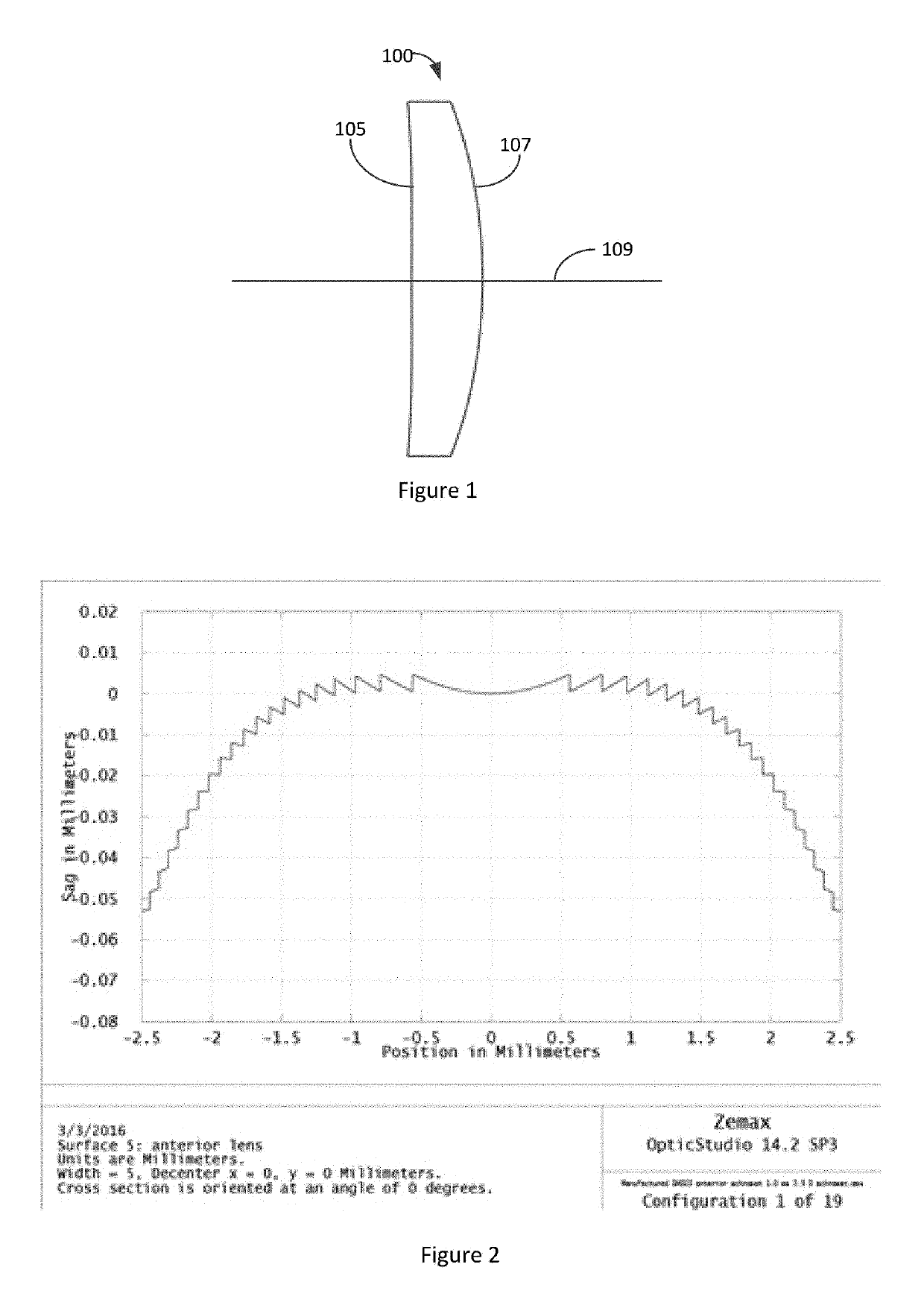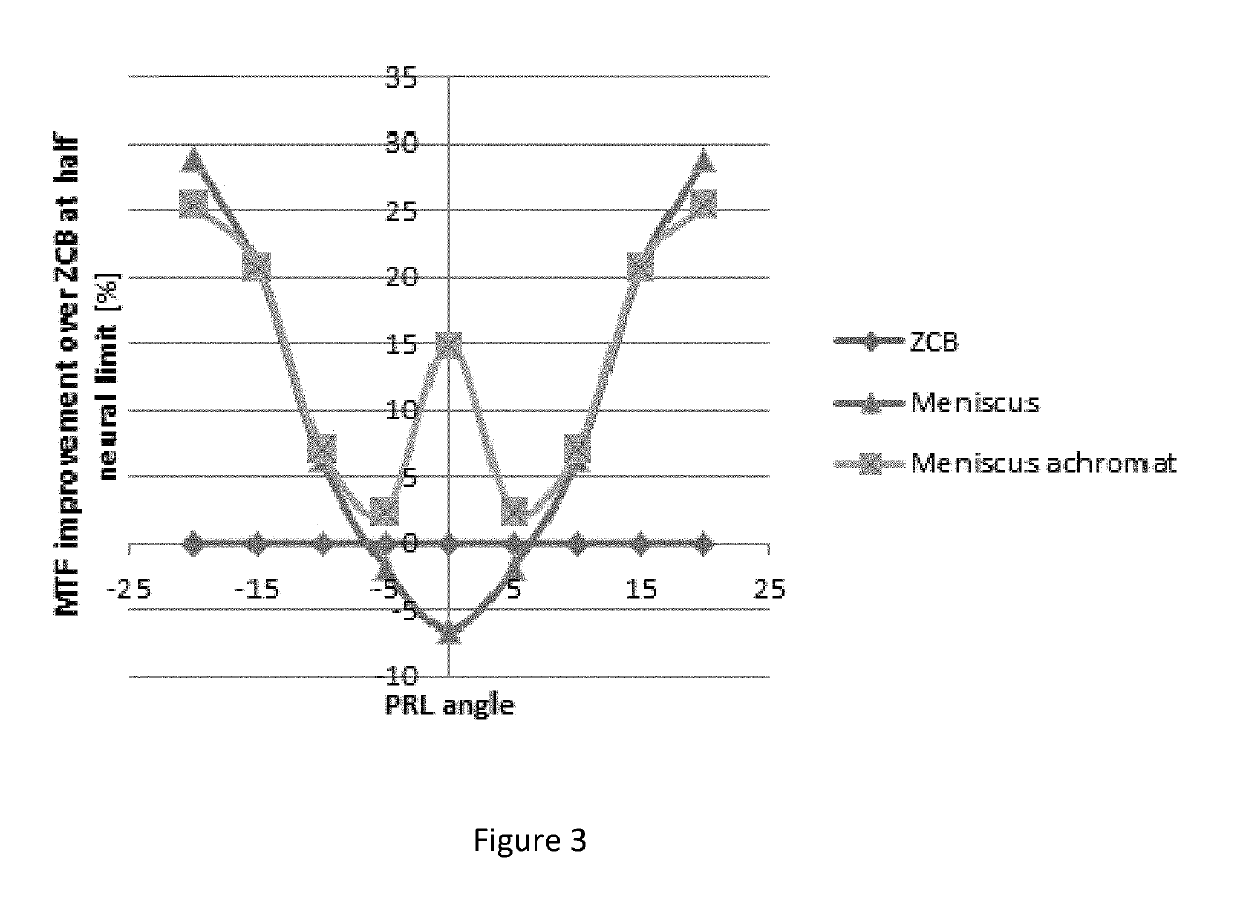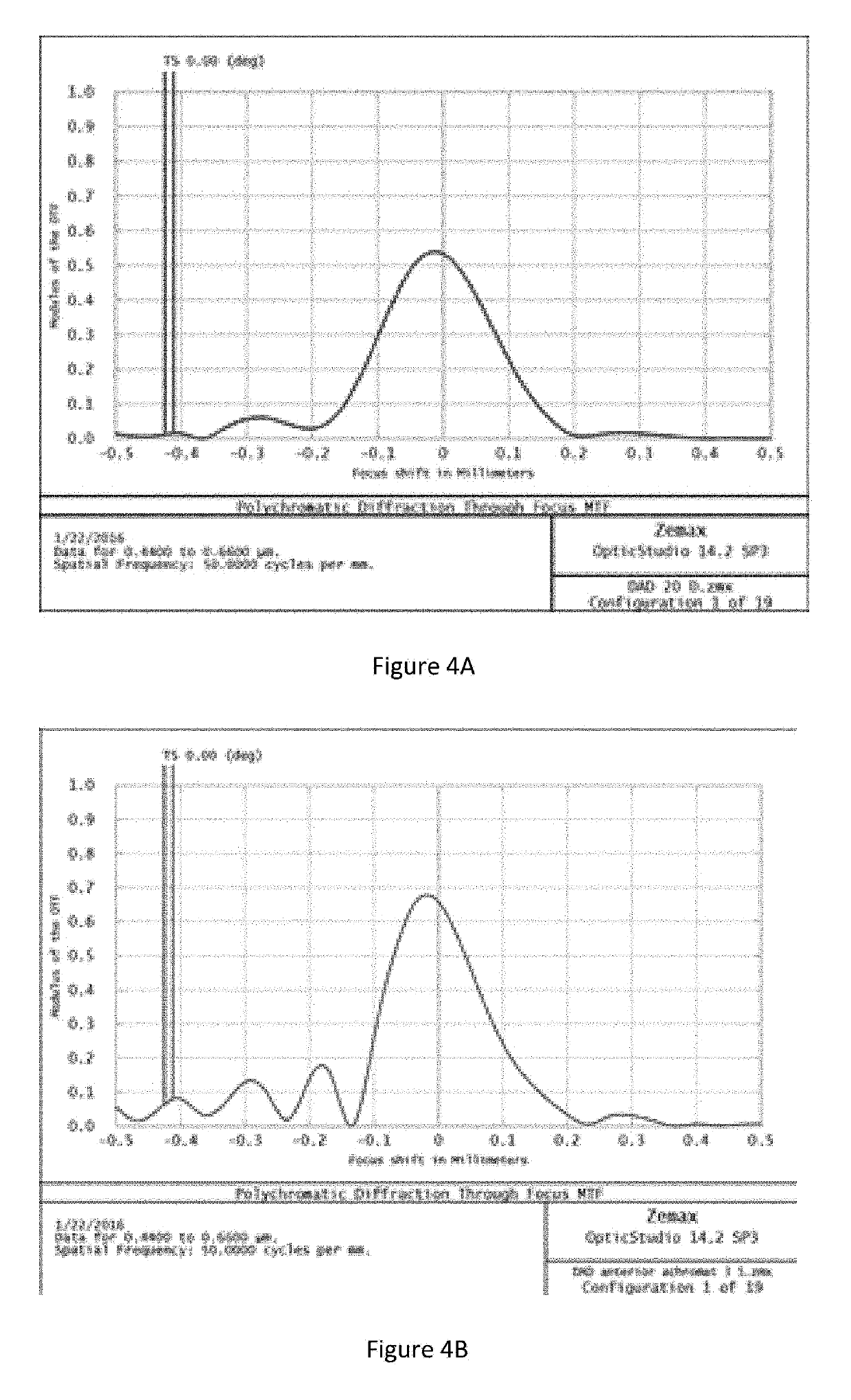Intraocular lenses that improve peripheral vision
a technology of intraocular lenses and peripheral vision, applied in the field of intraocular lenses that improve peripheral vision, can solve the problems of inability to carry out daily life, need to have incidence, and poor vision at the prl, and achieve the effects of reducing the density of ganglion cells, and improving the quality of optical images
- Summary
- Abstract
- Description
- Claims
- Application Information
AI Technical Summary
Benefits of technology
Problems solved by technology
Method used
Image
Examples
example method
of Designing an IOL
[0081]An example method of designing an IOL to correct for peripheral refractive errors is illustrated in FIG. 15. The method 1500 includes receiving ocular measurements for a patient as shown in block 1501. The ocular measurements can be obtained by an ophthalmologist using instruments such as a COAS or a biometer which are currently available in ophthalmology practice. The ocular measurements can include axial length of the eye, corneal power, refractive power that provides visual acuity for central vision, intraocular pressure, peripheral refractive errors measured by a visual fields test and any other measurements that can be used to characterize a patient's visual acuity for field angles up to ±30-degrees. The ocular measurements can include obtaining the variation of the peripheral astigmatism, horizontal coma and spherical optical power as a function of visual field angle.
[0082]An initial shape factor of an IOL that provides good visual acuity for central v...
PUM
 Login to View More
Login to View More Abstract
Description
Claims
Application Information
 Login to View More
Login to View More - R&D
- Intellectual Property
- Life Sciences
- Materials
- Tech Scout
- Unparalleled Data Quality
- Higher Quality Content
- 60% Fewer Hallucinations
Browse by: Latest US Patents, China's latest patents, Technical Efficacy Thesaurus, Application Domain, Technology Topic, Popular Technical Reports.
© 2025 PatSnap. All rights reserved.Legal|Privacy policy|Modern Slavery Act Transparency Statement|Sitemap|About US| Contact US: help@patsnap.com



